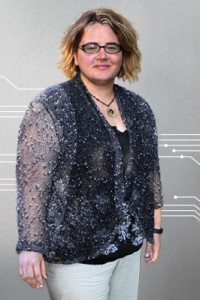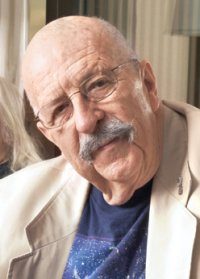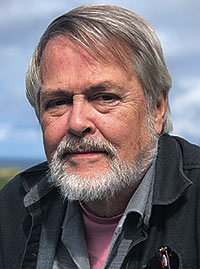Shannon Lee & Fonda Lee: Breath of the Dragon

SHANNON EMERY LEE was born April 19, 1969 in Santa Monica CA and grew up in Southern California, apart from a couple of years in Hong Kong as a young child. She is the only daughter of actor and martial arts legend Bruce Lee, and is an actress, businessperson, speaker, and producer. Lee is chairperson of the non-profit Bruce Lee Foundation, which ‘‘provides access to Bruce Lee’s teachings to help people enhance their personal growth and wellness.’’
She wrote the non-fiction book Be Water, My Friend: The Teachings of Bruce Lee (2020). Her new book, Breath of the Dragon (2025), coauthored with Fonda Lee, is her first work of fiction, and begins the Breathmarked YA fantasy duology.
FONDA LEE was born March 10, 1979 in Calgary, Canada, where she grew up, and lived in Toronto and the San Francisco Bay Area before settling in Portland OR. She recently relocated to the Boston MA area. Lee received an MBA from Stanford, and worked as a management consultant and business strategist before leaving the corporate track to focus on writing. She is an experienced martial artist, with black belts in karate and kung fu.
Lee’s YA debut Zeroboxer appeared in 2015. SF YA Exo (2017) was followed by sequel Cross Fire (2018). Adult novel Jade City (2017) was a Nebula Award finalist and World Fantasy Award winner, and launched the Green Bone Saga, which also includes Jade War (2019), Locus Award winner Jade Legacy (2021), novella The Jade Setter of Janloon (2022) and collection Jade Shards (2023). The saga was nominated for a Hugo Award for Best Series in 2022. Novella Untethered Sky (2024) was a Nebula Award and British Fantasy Award finalist.
Excerpt from the interview:
FL: “For Breath of the Dragon, the collaboration began with Shannon sending me her initial treatment and the ideas that she had, and then some inspirational materials, including a couple of her father’s unpublished script treatments, and a lot of books. I got to spend a pleasurable amount of time just immersing myself in those materials. We had a series of phone calls and put together a proposal to take out to publisher. We discussed the direction we wanted to take the story, and how many books it would be. We settled on it being two books because Shannon had come up with this theme of East and West, and it fit really well into the duology structure. Then I started writing a proposal and some sample pages.
“I remember the first sample pages I put together weren’t quite right in terms of the tone, because I’d been writing adult fiction for years. I got feedback from Shannon and her representatives that we wanted this to be more squarely a YA fiction novel, so I had to get back to my YA roots. I wrote a new proposal and sample pages, and introduced what I think is really a pivotal element that we did not imagine at the beginning, which is that the main character, Jun, has a twin brother. That ended up being the creative spark that really drove the story forward, and introduced so much more to the story in terms of personal stakes and core relationships.
“Once we had an outline and some sample pages, we went out on proposal with a number of publishers. There was a period of taking phone calls and talking to different editors and we ended up selling it to Wednesday Books, to an editor who really loved the project, Mara Delgado-Sánchez. At that point, once we had it placed, it was pretty much just writing. A lot of the process was us having conversations, me going away, disappearing for a while, writing a lot of words, sending them to Shannon for her to read, edit, respond to, revise, and then doing rounds and rounds of that. In terms of process, it felt pretty seamless, insofar as we weren’t beholden to an existing IP so we had a lot of creative freedom. We could make up the characters and the world and do whatever we wanted. From my perspective, it worked pretty much like any other writing project at that point. We did have our editor involved early on, because it sold on proposal as opposed to us writing the whole thing and then finding a home for it, so she was bought in to the overall direction of the story from the start.
SL: “Writing Breath of the Dragon was a very organic process. The collaboration was smooth and really natural. I give kudos to Fonda, who did the heavy lifting on the writing, and then would send to me to review, edit, revise, etc. Really, she’s just such an excellent writer and storyteller, so mine was the easy part. I always see my main job as making sure the project stays within the energetic guidelines of my father’s legacy, which wasn’t hard to do, in this case, because Fonda’s so well versed in the subject matter.
“Having it be a YA novel was important to me because I wanted to reach out to a younger fan base, and to introduce my father and his ideas and thoughts and themes to a younger audience of readers, and a younger generation. Even though Bruce Lee isn’t a character in the book, he’s mentioned in the dedication, and a lot of these ideas and themes are from him. And even though, to a certain extent, they’re universal ideas – there is a way of sweeping the ground for a new generation to encounter this type of storytelling and these ideas that hopefully lead readers to want to know more about Bruce Lee, in the process. My father’s films are all rated R, and they’re violent actioners, so I think this was an important step for me to try to put our arms around a younger generation. And hopefully some older readers come along for the ride as well!
FL: “I also felt it was a great opportunity to introduce Bruce Lee to younger people who aren’t as familiar with him, because while I grew up knowing who he was, and watching his films, I have two teenagers who didn’t do that. I came to fantasy, and to martial arts, as a teenager. That’s such a formative time of life, and very few things affect you quite as strongly when you’re a jaded adult. When you catch people when they’re young, you can really make an impact. My teen years were when I really became a writer, a martial artist, and a Bruce Lee fan, so for this project I wanted to tap into that time of my life, that youthful energy.
“I had started out writing YA fiction, so I liked the fact that this was an opportunity to return to it. At the time, I didn’t have another YA project brewing; I had a bunch of adult projects on my list, but I didn’t know if I had another YA project in me. So this ended up being the one.
SL: “The books are a great opportunity to explore what it means to attain self-knowledge. While there’s a struggle for power between east and west within the books, there are also the individual journeys of self-knowledge for the characters: What they come to know about themselves as they go on this coming-of-age journey, and the places where they might be ignorant and need to learn more – be able to step into themselves a little bit more.
FL: “The story is also about challenging perceptions. There are beliefs that the characters hold and their society holds. One of those ideas revolves around how magic works in this world. There are certain people who are born with dragon scales on their body, and they have a special gift. How that gift is perceived is part of their culture. By making the main character someone who doesn’t have this gift, the journey becomes about him learning that he does have gifts, even in this world where gifts are very overtly granted by forces above. There’s not just the magic of the dragon skin, but also these divine scrolls, and the belief is the scrolls contain wisdom that allows those who hold them to do no wrong. Throughout the story, both of those beliefs are challenged.
Interview design by Francesca Myman
Read the full interview in the January 2025 issue of Locus.
 While you are here, please take a moment to support Locus with a one-time or recurring donation. We rely on reader donations to keep the magazine and site going, and would like to keep the site paywall free, but WE NEED YOUR FINANCIAL SUPPORT to continue quality coverage of the science fiction and fantasy field.
While you are here, please take a moment to support Locus with a one-time or recurring donation. We rely on reader donations to keep the magazine and site going, and would like to keep the site paywall free, but WE NEED YOUR FINANCIAL SUPPORT to continue quality coverage of the science fiction and fantasy field.
©Locus Magazine. Copyrighted material may not be republished without permission of LSFF.







